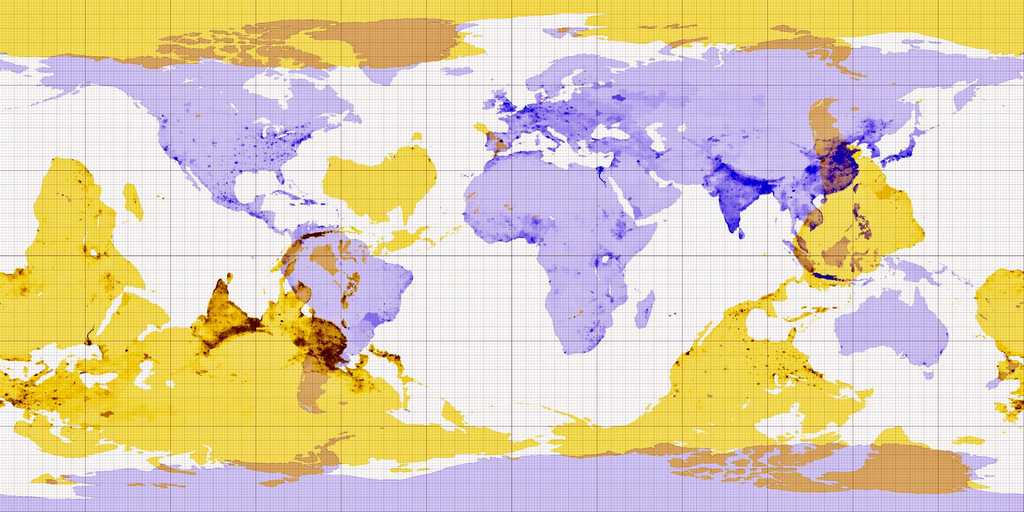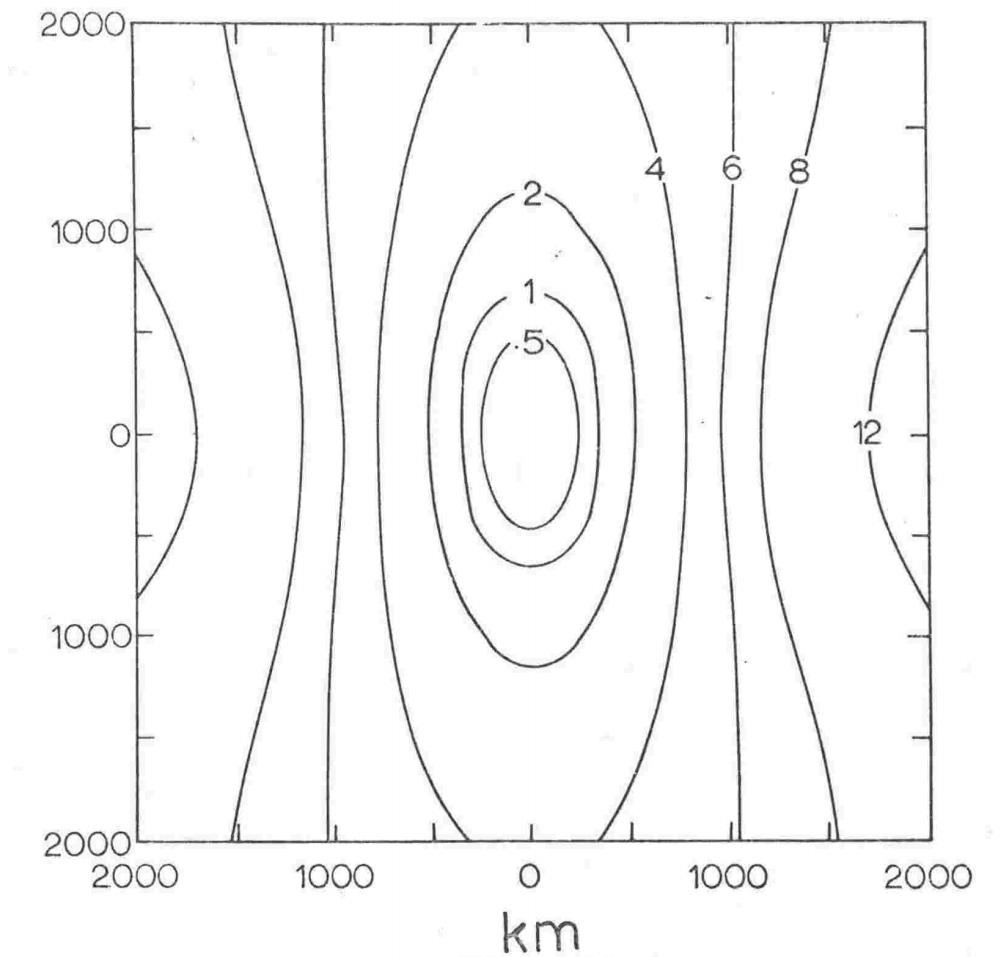by Steve Whitt
It is likely that reception of MW radio signals from Australia (and New Zealand more so) in the UK should benefit from something called antipodal focusing. But what exactly is antipodal focusing and does it really exist?
This topic started as a thought experiment many years ago and I revisited it recently, triggered by Alan Pennington’s report of hearing Australia 5RN Radio National, Adelaide on 729 kHz at Sheigra in North West Scotland in October 2020.
Firstly we need to understand what the antipodes are. Every point on the earth has a location exactly on the opposite side of the globe approximately 20000km distant. If you travel further you are starting your return journey back to your starting point.

Theory
To visualise the idea of antipodal focusing imagine you are at the North Pole with a transmitter and an omni-directional antenna.
When you transmit, your signal heads out equally in all direction. The signal propagates away and follows the lines of longitude. Traditionally the signal gets weaker as it spreads out away from the transmitter due the inverse square law.
It also gets weaker due to signal loss and absorption, but for this thought experiment let’s assume no signal absorption.
As the signal radiates from the North Pole it will eventually reach the Equator having traveled ~ 10000km.
If you were listening at the equator you’d find the same signal strength where ever you listened on the equator because everywhere is equidistant from the North Pole.
Now the interesting bit starts
The signal continues to propagate south past the equator and continues until signals reach the South Pole. At the South Pole all the signals that left the North Pole in all directions, re-converge.
Hypothetically all the radio energy that left the North Pole would appear at the South Pole. So if there was no signal loss/absorption a listener at the South Pole would hear a signal as strong as if they were at the North Pole!
Could that be true? Yes, if the transmission path/medium was lossless and omni directional transmit and receive antennas were used.
But suppose the signal could only propagate at night. At the equinox both poles experience 12 hours of day and night. That would mean that only half the energy radiated from the North Pole would reach the South Pole. Astonishingly that is just 3dB loss, less than 1 S-point!
Clearly the best reception point is at the antipode but, in the above example, the signal enhancement would increase the further one traveled south from the Equator. And there would be a zone around the antipodes where good enhancement should exist.
Now of course you won’t find a transmitter at the North Pole and you’re unlikely to be listening at the South Pole. But this effect is present no matter where the transmitter is located as long as you are listening 20000 km away at the antipodes. There are many antipode pairs that don’t involve ship borne listening: Here are some examples of city-city antipodes pairs:
- Hamilton, Bermuda and Perth: 19,966 km (12,406 mi) apart
- Taipei and Asuncion: 19,912 km (12,373 mi) apart
- Santiago and Xi’an: 19,897 km (12,363 mi) apart
- Madrid and Wellington: 19,876 km (12,350 mi) apart
- Tangier and Auckland: 19,859 km (12,340 mi) apart
- Jakarta and Bogota: 19,808 km (12,308 mi) apart
- Quito and Kuala Lumpur: 19,700 km (12,200 mi) apart
- Buenos Aires and Shanghai: 19,630 km (12,200 mi) apart
- Johannesburg and Honolulu: 19,188 km (11,923 mi) apart
Reality check
One practical problem of course is that the propagation path is far from lossless and different paths are not uniform, so the signal may be too weak to receive despite antipodal focusing.
If signals do arrive via multiple paths at the antipodes the signals will arrive at different times and phases due to differences in the propagation medium and path differences (the earth is not a precise sphere). This means one would experience multipath distortion and deep signal fading.
Use of a directional receiving antenna may not be helpful. In fact the listener could point the antenna any direction and receive the same signal strength. The summation of signals would only happen if signals from all directions were received simultaneously and combined.
Rotating interferometer studies in the 1950s established that for receivers located up to 10000km or so the incoming bearing was always within 5 degrees of the mean great circle direction. As the distance increases beyond this, bearing variation becomes larger and more irregular, theoretically reaching a maximum at the antipodes (20000km). Ignoring absorption effects all incoming bearing directions should be equally possible.
In practice
We have to understand what signals are able to propagate to the other side of the world. In practice this means VLF and LF signal as used for communication with submarines and high stability time signals. And it also includes SW frequencies.
Could this be experienced at medium wave?
The earliest evidence of antipodal focusing at VLF was noted as early as 1922. Measurements made in the 20-30kHz range clearly showed some enhancement was happening. Marconi suggested the concept based on geometric grounds which is the way I’ve tried to describe the process here.
Experiments in the 1960s were conducted at 16MHz in New Zealand and suggested that the antipodal zone extended about 1500km from the precise antipode.
A document well worth reading is the thesis by Gary Edward John Bold for his PhD at the University of Aukland NZ October 1970. Don’t be put off by the fact that it is a 234 page thesis – any DXer will understand a good deal of what he writes in plain English.
Bold conducted reception tests in New Zealand using the VOA transmitter at Tangiers, Morocco but was hampered by the lack of a 24hour signal source and the fact that the VOA transmitter used a directional antenna and switched frequencies and powers.
Bold concludes that antipodal focusing at 16MHz was both predictable and measurable but the focus point could move several hundred km from the antipodes due to ionospheric tilts distorting the symmetry of the multiple paths.
How useful is antipodal focusing
Amongst many simulations and measurements in Bold’s thesis I have picked one plot to illustrate the effect. In the diagram below the antipodes is in the centre and you are in effect looking down on the antipodes from above. The contours represent the signal strength reduction as one moves away from the antipodal focussing point. The contour labels correspond to power level below the maximum in dB (0dB being at the focus point)

Viewed another way the focusing effect can enhance the received signal by 10dB so that a signal traveling 20000km could be significantly stronger than a similar one only traveling 18000km!
What about antipodal focusing on MW?
The time to look for a focusing effect on MW is when both the transmitter and receiver (located at antipodes) are in (or nearly in) darkness. In other words at sunset/sunrise.
By strange coincidence that situation is often referred to as a “grey line” propagation path. But that implies there is only one signal path that follows the grey line /terminator between day & night. With potential signal focusing one needs to consider the multitude of possible paths between transmitter & receiver – all approximately 20000km distant and the sum of all these signals arriving at the antipodes boosting reception.
The practical problem is finding a good listening location for DXers matched to an antipodes with at least a few MW stations operating with reasonable transmitter power. In reality there are not many paths that meet this requirement.
In March 2007 DXer John Bryant visited Easter Island and proved that it was possible to receive MW signals slightly further than the antipodes. John received a station in Oman at a distance of 21350km via the long path!
Conclusion
Antipodal focusing has been well understood at VLF frequencies for many years and evidence (and simulation) shows the effect at 16MHz as well.
So we must ask ourselves whether MW signals are likely to experience similar effects. The answer is almost certainly yes. But it will take some effort to detect or measure using modern SDRs.
What can DXers do?
The first thing to do is to check the world map to identify where your antipodes is located and then do some research to see what stations are located within a circle of about 1000km. Look for high power stations on channels not blocked by interference. Sadly for many DXers their antipodes will be in the middle of an ocean, which rather rules out possible reception using this technique. But if you are lucky enough and you plan carefully you might be able to catch MW signals from the other side of the world.